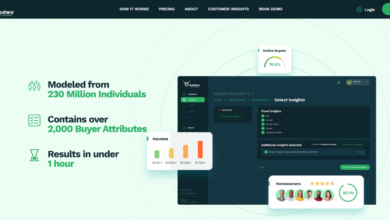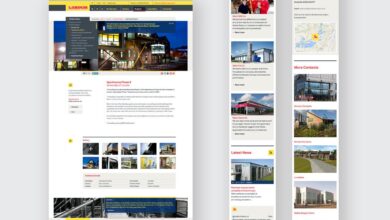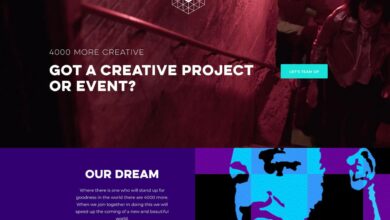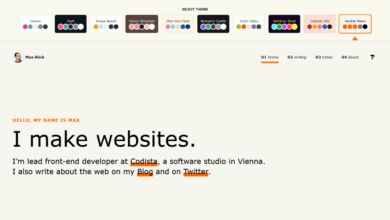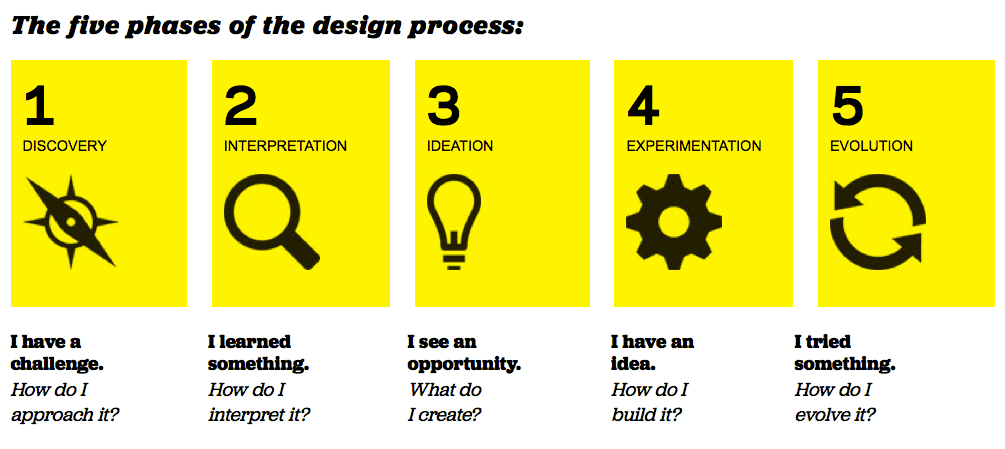
5 Key Development Approaches for Designers
5 Key Development Approaches for Designers: Level up your design game! This post dives deep into five crucial methodologies – User-Centered Design, Agile Development, Lean UX, Design Thinking, and Iterative Design & Prototyping – that every designer needs to master. We’ll explore the core principles of each, highlighting practical applications and real-world examples to help you integrate these approaches into your workflow and create truly exceptional designs.
From understanding user needs through meticulous research to embracing iterative processes and rapid prototyping, we’ll cover the key elements of each approach, showing you how to leverage them to deliver innovative and user-friendly products. Get ready to transform your design process and unlock your creative potential!
User-Centered Design
User-centered design (UCD) is a crucial approach in software development that prioritizes the needs, wants, and limitations of the end-user throughout the entire design and development process. It moves away from a developer-centric approach, focusing instead on creating products that are intuitive, enjoyable, and effective for the intended audience. This iterative process ensures the final product genuinely solves user problems and meets their expectations.
The core principle of UCD is to understand the user. This understanding informs every decision, from the initial concept to the final release and beyond. It’s not just about making something look good; it’s about making something that works seamlessly and effectively for the user.
User Research Methods
Understanding the user requires employing various research methods. These methods provide valuable insights into user behavior, needs, and preferences. The choice of methods depends on the project’s goals and available resources. Common methods include user interviews, where designers directly interact with users to gather qualitative data; surveys, which allow for collecting quantitative data from a larger sample size; usability testing, which involves observing users interacting with prototypes to identify pain points and areas for improvement; and contextual inquiry, where researchers observe users in their natural environment to understand their tasks and workflows.
A combination of these methods often provides the most comprehensive understanding.
Incorporating User Feedback
User feedback is not a one-time event; it’s a continuous process integrated throughout the design lifecycle. Feedback is collected at various stages, from initial concept validation through iterative prototyping and testing. This feedback is then analyzed to identify areas needing improvement, informing design adjustments and iterations. Tools like A/B testing can be used to compare different design options and measure their effectiveness based on user responses.
This iterative feedback loop ensures that the design continually evolves to better meet user needs.
User Persona Example: Fitness Tracker App
Let’s consider a hypothetical mobile fitness tracker application. A representative user persona might be:
Name: Sarah Miller
Age: 32
Occupation: Marketing Manager
Goals: Improve fitness, lose weight, track progress, stay motivated.
Technology Proficiency: High
Frustrations: Complicated interfaces, lack of personalized feedback, apps that require too much data entry.
This persona informs design decisions. For example, the app’s interface should be clean and intuitive, minimizing the need for extensive data entry. Personalized feedback and progress tracking features would be prioritized to address Sarah’s goals and motivations. The design should also consider Sarah’s busy lifestyle, ensuring the app is easy to use even with limited time.
Case Study: Redesign of a Banking Website
A major bank redesigned its online banking platform using a UCD approach. Initial user research revealed that customers found the existing website confusing and difficult to navigate. Usability testing identified specific pain points, such as the location of key features and the complexity of the account management process. The bank then created user personas representing different customer segments, informing the redesign process.
Iterative prototyping and usability testing were conducted throughout the project, resulting in a new website that was significantly easier to use and more intuitive. Post-launch data showed a significant increase in customer satisfaction and a reduction in customer service calls related to online banking. The success of this project demonstrates the power of UCD in creating user-friendly and effective digital products.
Agile Development Methodology
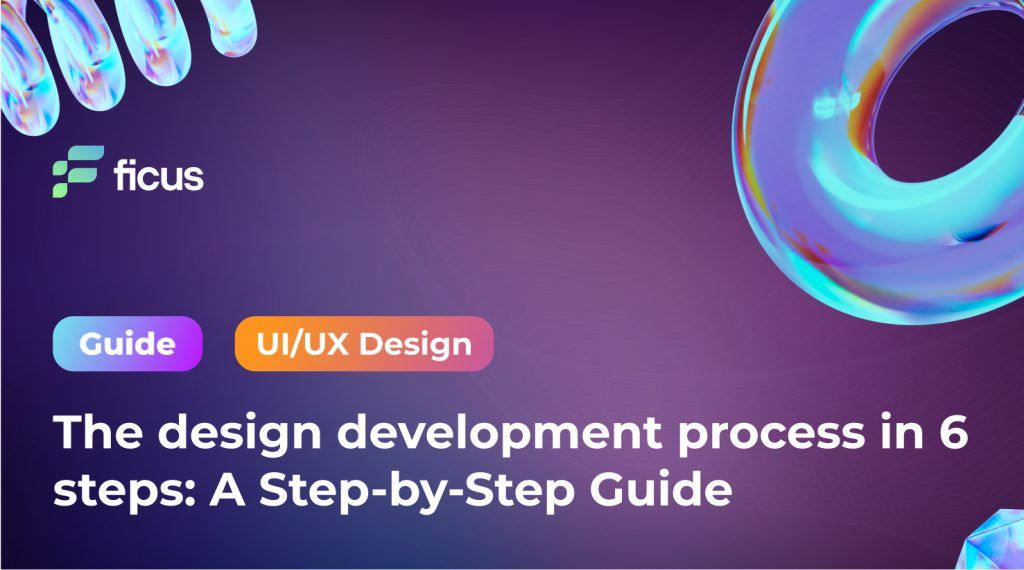
Source: ficustechnologies.com
Agile development is a game-changer for designers, offering a flexible and collaborative approach that contrasts sharply with the rigid structure of traditional methods. Its iterative nature allows for continuous improvement and adaptation, ensuring the final product aligns perfectly with user needs and evolving business requirements. This dynamic process empowers designers to contribute meaningfully throughout the entire development lifecycle.Agile’s iterative nature, built on short development cycles called sprints, allows for frequent feedback and adjustments.
This means designers aren’t just creating mockups at the beginning; they’re actively involved in testing, refining, and iterating on designs throughout the project. This continuous feedback loop minimizes the risk of building something users don’t want and maximizes the chances of creating a successful product.
Mastering the 5 key development approaches for designers – user-centered design, agile methodologies, iterative prototyping, and collaborative workflows – is crucial for success. But to really reach a wider audience and showcase your skills, you need to effectively market yourself, which is why understanding how to leverage platforms like YouTube is key. Check out this fantastic guide on getting it on with youtube to boost your visibility.
Ultimately, combining strong design skills with smart marketing strategies, like utilizing YouTube, will propel your design career forward.
Agile versus Waterfall Methodologies
From a designer’s perspective, the key difference lies in the flexibility and collaboration. Waterfall is a linear process where design is typically completed upfront, before development begins. This can lead to significant rework if user feedback reveals flaws in the initial design. Agile, on the other hand, embraces change and allows for design iterations based on continuous feedback.
Designers are actively involved throughout the process, adapting their work based on real-time insights. This collaborative environment fosters a better understanding of user needs and technical constraints, resulting in a more effective and user-friendly final product.
Agile Design Sprints and Their Deliverables
Agile design sprints are typically short, time-boxed iterations (often one to four weeks) focused on a specific feature or aspect of the product. A typical sprint might involve user research, sketching, prototyping, usability testing, and design refinement. Deliverables vary depending on the sprint’s goal, but they might include low-fidelity wireframes, interactive prototypes, high-fidelity mockups, user stories, and updated design specifications.
For example, a sprint focused on the checkout process might result in a clickable prototype of the checkout flow, along with user testing data and revised design specifications based on the testing feedback. Another sprint might focus solely on the design of a specific UI element, resulting in high-fidelity mockups and style guides.
The Designer’s Role in Agile Daily Stand-ups and Sprint Planning
Designers play a crucial role in both daily stand-ups and sprint planning. In daily stand-ups, designers share their progress, highlight any roadblocks, and coordinate with developers and other team members. This daily check-in ensures everyone is on the same page and allows for quick problem-solving. During sprint planning, designers contribute to defining user stories, estimating task complexity, and identifying design tasks for the upcoming sprint.
This active participation ensures that design considerations are integrated into the overall sprint goals and timeline.
Sample Agile Design Task Board
The following table illustrates a sample Agile design task board, showing the workflow and progress tracking for a hypothetical design sprint focused on improving a mobile app’s user onboarding flow.
| Task | Status | Assigned To | Due Date |
|---|---|---|---|
| User Research: Conduct user interviews | Completed | Jane Doe | 2024-10-26 |
| Sketching: Create low-fidelity wireframes | In Progress | John Smith | 2024-10-27 |
| Prototyping: Develop interactive prototype | To Do | Jane Doe | 2024-10-28 |
| Usability Testing: Conduct usability tests | To Do | John Smith | 2024-10-29 |
| Design Refinement: Update designs based on testing | To Do | Jane Doe | 2024-10-30 |
Lean UX Principles
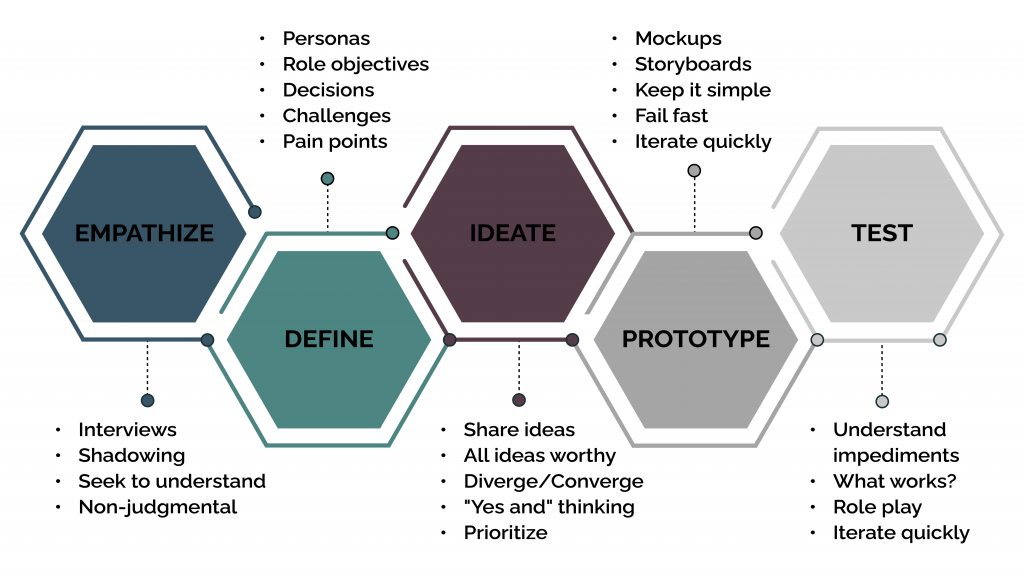
Source: radiant.digital
Lean UX is a design approach that prioritizes speed, efficiency, and continuous learning. It’s built on the principles of lean manufacturing, focusing on eliminating waste and maximizing value for the user. Unlike traditional design processes, Lean UX emphasizes iterative development, rapid prototyping, and validated learning through data analysis. This approach is particularly valuable in today’s fast-paced digital landscape where user needs and technologies evolve quickly.
Key Lean UX Principles and Their Relevance to Design Efficiency
Lean UX relies on several core principles to achieve its goals. These principles, when implemented effectively, streamline the design process, reduce wasted effort, and improve the overall efficiency of design teams. The principles include focusing on the user, building a minimum viable product (MVP), testing early and often, and iterating based on data. By focusing on these core tenets, designers can avoid spending time on features users don’t need or want, resulting in significant time and resource savings.
For example, instead of spending months designing a complex feature, a Lean UX approach would involve building a simple version, testing it with users, and then iterating based on the feedback received.
Rapid Prototyping and A/B Testing in Lean UX
Rapid prototyping is a cornerstone of Lean UX. The goal is to quickly create functional prototypes, even if they are low-fidelity, to test assumptions and gather user feedback. This allows designers to identify problems early in the process, before significant resources have been invested. A/B testing complements prototyping by enabling designers to compare different design solutions against each other in a controlled environment.
This data-driven approach helps to identify which designs perform better and informs further iterations. For instance, a company might A/B test two different versions of a landing page, one with a prominent call-to-action button and another with a more subtle one, to see which converts more users.
Minimum Viable Product (MVP) Development Using Lean UX
An MVP is a product with just enough features to attract early-adopter customers and validate a product idea early on. Lean UX plays a crucial role in the development of MVPs. By focusing on core functionalities and iteratively adding features based on user feedback, Lean UX ensures that the MVP is focused on solving the most pressing user needs.
For example, a social media app’s MVP might only include core features like posting, commenting, and following, leaving out more advanced features like direct messaging or group chats for later iterations. This approach minimizes development time and cost, allowing for faster validation of the core concept.
The Role of Data Analysis in Iterative Design Improvements
Data analysis is integral to the iterative nature of Lean UX. Data gathered from user testing, A/B testing, and analytics tools informs design decisions at every stage. This data-driven approach ensures that design improvements are based on real user behavior and preferences rather than assumptions. For example, analyzing heatmaps of a website can reveal which areas users interact with the most and which are ignored, allowing designers to optimize the layout and improve usability.
Similarly, analyzing user feedback from surveys or interviews can provide insights into user pain points and areas for improvement.
Lean UX Design Process Workflow
The following workflow diagram illustrates the cyclical nature of the Lean UX design process. Each stage feeds into the next, creating a continuous loop of learning and improvement.
- Ideate: Define the problem and brainstorm potential solutions.
- Prototype: Quickly build a low-fidelity prototype to test assumptions.
- Test: Gather user feedback through usability testing or A/B testing.
- Analyze: Analyze the data collected to identify areas for improvement.
- Iterate: Refine the design based on the analysis and repeat the cycle.
Design Thinking Process
Design Thinking, a human-centered problem-solving approach, offers a powerful framework for designers to tackle complex challenges. It emphasizes empathy, experimentation, and iteration, leading to innovative and user-friendly solutions. This methodology moves beyond simply creating aesthetically pleasing designs and focuses on understanding the user’s needs and creating solutions that truly address them.Design Thinking is a five-stage iterative process, meaning you can cycle through the stages multiple times as you refine your understanding and solution.
Each stage builds upon the previous one, creating a cyclical flow that encourages continuous improvement.
The Five Stages of Design Thinking
The five stages – Empathize, Define, Ideate, Prototype, and Test – provide a structured approach to problem-solving. Each stage involves specific activities and deliverables that contribute to the overall success of the project.
- Empathize: This initial stage focuses on deeply understanding the user and their needs. Activities include user research (interviews, surveys, observations), creating empathy maps to visualize user needs and pain points, and developing user personas to represent key user groups. The deliverable is a rich understanding of the user’s context, needs, and motivations. For example, conducting ethnographic studies to observe users interacting with a product in their natural environment would be a valuable activity in this phase.
- Define: This stage involves clearly articulating the problem based on the insights gained during the empathize stage. Activities include formulating a problem statement that concisely captures the core challenge, creating a user journey map to visualize the user’s experience, and defining key metrics to measure success. The deliverable is a concise and focused problem statement that guides the subsequent stages.
For instance, a well-defined problem statement might be: “How might we improve the online checkout process to reduce cart abandonment rates?”
- Ideate: This stage is about brainstorming and generating a wide range of potential solutions to the defined problem. Activities include brainstorming sessions, sketching, mind mapping, and using design thinking tools like the “How Might We” question framework. The deliverable is a diverse collection of ideas, ranging from the seemingly impractical to the highly feasible. A typical output would be a whiteboard covered in sketches and notes representing a variety of concepts.
- Prototype: This stage involves creating tangible representations of the ideas generated in the ideation phase. These prototypes can range from low-fidelity sketches and wireframes to high-fidelity mockups and interactive prototypes. Activities include sketching, wireframing, prototyping using digital tools, and building physical prototypes. The deliverable is a tangible representation of the proposed solution, allowing for testing and refinement.
For example, a simple paper prototype of a mobile app’s interface could be created to test basic usability.
- Test: This stage involves evaluating the prototypes with users to gather feedback and identify areas for improvement. Activities include user testing sessions, usability testing, A/B testing, and gathering feedback through surveys or interviews. The deliverable is valuable user feedback that informs the iterative process. For instance, analyzing user test results to determine which design elements are most effective and identifying areas requiring modification.
Comparing Design Thinking with Other Methodologies
Design Thinking shares similarities with other methodologies but also has distinct characteristics. Compared to Agile, which focuses on iterative development, Design Thinking emphasizes deep user understanding before development begins. Lean UX, while also user-centered, is more focused on minimizing waste and maximizing efficiency through rapid iteration. User-centered design focuses on the user, but Design Thinking provides a more structured process for achieving user-centricity.
Case Study: Redesigning a Hospital Waiting Room
A hospital faced challenges with its waiting room, characterized by long wait times, uncomfortable seating, and a lack of information. Using Design Thinking, the team first empathized with patients and staff through observations and interviews, revealing anxieties, boredom, and a lack of clarity about wait times. The defined problem was “How might we improve the patient experience in the waiting room?” Ideation resulted in concepts like interactive screens displaying wait times and entertainment options.
Prototypes, including mockups of the redesigned space and interactive screen interfaces, were tested with patients and staff, leading to further refinements. The final design incorporated comfortable seating, clear information displays, and calming visuals, significantly improving patient satisfaction.
Visual Representation of the Design Thinking Process
Imagine a circular flow chart. Each stage (Empathize, Define, Ideate, Prototype, Test) is represented by a segment of the circle. Arrows connect each segment, indicating the iterative flow between stages. The Empathize segment could be depicted with a person icon representing the user, the Define segment with a magnifying glass symbolizing problem definition, the Ideate segment with light bulbs signifying creative ideas, the Prototype segment with a sketch of a product, and the Test segment with a graph representing data analysis.
The entire circle symbolizes the iterative nature of the process, where learnings from the Test stage feed back into the Empathize stage to begin the cycle anew.
Iterative Design and Prototyping
Iterative design and prototyping are crucial for creating successful digital products. They allow designers to continuously refine their designs based on user feedback and testing, ultimately leading to a more user-friendly and effective final product. This approach embraces the understanding that design is not a linear process, but rather a cyclical one of creation, evaluation, and refinement.
Iterative design emphasizes the importance of building and testing prototypes early and often. This allows for the identification and resolution of design flaws and usability issues before significant resources are invested in development. By incorporating user feedback at each iteration, designers can ensure that the final product meets the needs and expectations of its intended users.
Prototyping Methods and Their Applications, 5 key development approaches for designers
Different prototyping methods cater to various stages of the design process and have their own strengths and weaknesses. Choosing the right method depends on the project’s needs, available resources, and the stage of development. Low-fidelity prototypes are quick and cheap to create, ideal for early exploration and testing of core concepts. High-fidelity prototypes, on the other hand, offer a more realistic representation of the final product, enabling detailed usability testing.
User Feedback and Iterative Design Improvements
User feedback is the cornerstone of iterative design. Gathering feedback through usability testing, surveys, or interviews allows designers to identify areas for improvement and make data-driven design decisions. This feedback loop ensures that the design evolves to better meet user needs and expectations. For example, if user testing reveals that a particular button is difficult to find or understand, the design can be adjusted to improve its visibility and clarity in the next iteration.
Analyzing user behavior and pain points during testing provides invaluable insights for iterative refinement.
Creating a Low-Fidelity Prototype for a Simple Web Page
A low-fidelity prototype is a quick and inexpensive way to test the basic structure and functionality of a design before investing time in a higher-fidelity version. Here’s a step-by-step guide:
Before starting, it’s important to define the core functionality and key features of the web page. This ensures the prototype focuses on the essential aspects to be tested.
- Sketch the layout: On paper or using a digital drawing tool, sketch the basic layout of the web page, including placement of key elements like navigation, header, content area, and footer.
- Annotate functionality: Add notes to your sketch indicating the functionality of each element. For example, annotate buttons with their intended actions.
- Create a clickable prototype (optional): Tools like Figma or Adobe XD can be used to create a simple clickable prototype based on your sketch. This allows for a more interactive testing experience.
- Test with users: Observe users interacting with the prototype and gather feedback on usability and overall design.
- Iterate based on feedback: Refine the design based on user feedback and repeat the process until the design meets the desired level of usability.
Examples of Prototype Types
Three distinct prototype types illustrate the range of fidelity and application in the design process. Each possesses unique strengths and limitations influencing its suitability for specific design phases.
| Prototype Type | Description | Strengths | Weaknesses |
|---|---|---|---|
| Paper Prototype | A hand-drawn or sketched representation of the design, often using paper and sticky notes to simulate interaction. | Quick, inexpensive, and easy to create; facilitates early user testing and concept validation. | Limited interactivity; lacks visual fidelity; may not accurately represent the final product’s look and feel. |
| Interactive Prototype (Mid-Fidelity) | A digital prototype created using prototyping tools like Figma or Adobe XD. It incorporates basic interactivity but may lack the visual polish of a high-fidelity prototype. | Allows for testing of user flows and interactions; provides a more realistic representation than paper prototypes; relatively quick to iterate. | May not accurately reflect the final visual design; can still be time-consuming to create compared to paper prototypes. |
| High-Fidelity Prototype | A near-final representation of the product, incorporating detailed visuals, animations, and realistic interactions. Often indistinguishable from the final product. | Provides a highly realistic user experience; allows for thorough usability testing; effectively communicates the final product’s design to stakeholders. | Time-consuming and resource-intensive to create; requires advanced design and prototyping skills; may be difficult to iterate quickly. |
End of Discussion: 5 Key Development Approaches For Designers
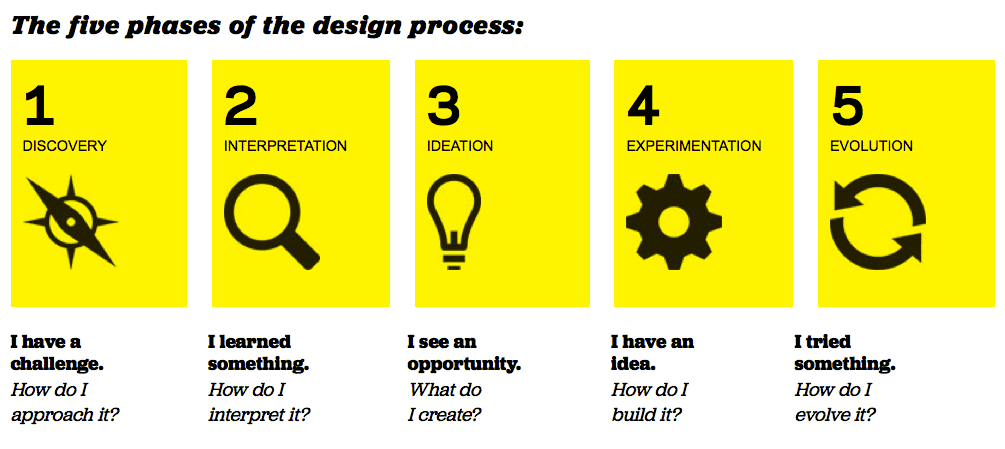
Source: pinimg.com
Mastering these five key development approaches – User-Centered Design, Agile, Lean UX, Design Thinking, and Iterative Design – is the secret sauce to creating truly impactful and user-friendly designs. By embracing these methodologies, you’ll not only improve your design process but also enhance your ability to collaborate effectively, adapt to change, and deliver exceptional results. So, go forth and design something amazing!
User Queries
What’s the difference between high-fidelity and low-fidelity prototyping?
Low-fidelity prototypes are quick, rough representations (like sketches or wireframes), ideal for early testing. High-fidelity prototypes closely resemble the final product, offering a more polished user experience for later-stage testing.
How can I effectively incorporate user feedback into the design process?
Use surveys, usability testing, A/B testing, and user interviews to gather feedback throughout the design process. Analyze this feedback to identify areas for improvement and iterate on your designs accordingly.
Is Agile development suitable for all design projects?
While Agile is highly adaptable, it might not be the best fit for every project. Projects with fixed requirements and limited flexibility might benefit more from a Waterfall approach. Consider the project’s scope and complexity when choosing a methodology.
How can I apply Design Thinking to a real-world problem?
Start by empathizing with the user, defining the problem clearly, ideating solutions, prototyping those solutions, and testing them with users. Iterate based on feedback until you find a solution that works.
